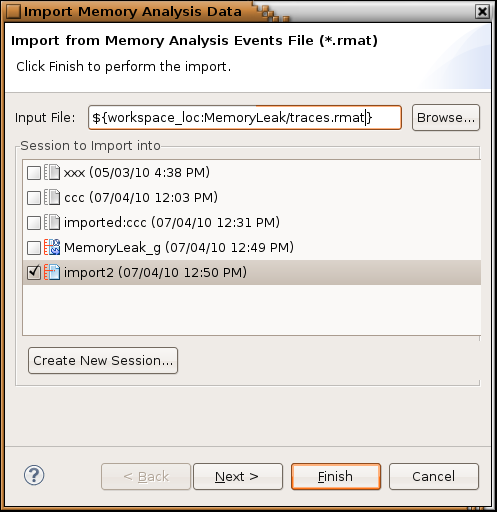You can perform memory analysis on a running program or you can log the trace to a file on the target system.
The advantage of logging the trace is that doing so frees up qconn resources; you run the process now
and perform the analysis later. Also, if your target is not connected to the network, it's the only way you can do memory analysis.
To perform a postmortem memory analysis:
The memory analysis session would be created and populated with the data. Click on the session to start the analysis,
as explained in Viewing Memory Analysis data.
For the supported options of the rcheck library, see the summary of Memory Analysis Tool (MAT)
graphical user interface options (flags) and their corresponding environment variables at
Tool options and environment variables.
